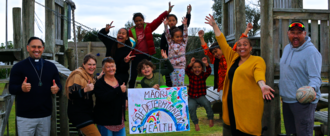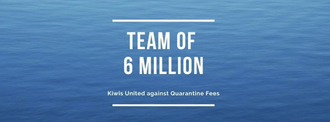-
NZ Sign Language Accessibility to Commemoration, Anniversaries & FestivalsDeaf people need access to NZSL Interpreters to communicate with friends, whānau, stall holders, at public events. Formal NZSL interpreting at these events means Deaf people can follow the proceedings, speeches given by dignitaries, and participate too. Not having access excludes Deaf people from participating in commemoration events fully. This could be anything from wanting to know more about the products being sold by stall holders to having a catch up conversation with friends & whanau one meets at these events, engaging in discussions on matters pertaining to the event itself with other attendees.503 of 600 SignaturesCreated by Deaf Action

-
Tairawhiti support for the establishment of Māori WardsWhanau and friends of Tūranga-nui-a-Kiwa/Gisborne invite you to sign this petition to show you care about meaningful and effective Māori/Pākehā partnership in local government in Aotearoa. Recently the GDC voted unanimously to establish Māori wards. http://www.gisborneherald.co.nz/local-news/20201124/maori-wards/ Historically Māori have not had fair representation at the decision-making table. We now have an opportunity to have equitable Māori representation at a local government level. However, there is a racist clause in legislation. If 5% of registered voters decide they don't want Māori wards, the GDC will be forced into a referendum which will cost our community thousands and will impact the mana of our community. While those against this are gathering momentum to block the establishment of the Ward we can counter the spread of racist ideology through the aroha in this petition. We are a small group of Pakeha, everyday citizens who want to provide support to our Treaty partners and encourage others to do the same. We acknowledge the hard mahi of Tangata Whenua and locals who have been fighting for the establishment of Māori wards. We hope this petition can tautoko te mahi and let you know we are with you. Please sign this petition to show the GDC and councils nationwide that we support the establishment of a Māori Ward and value on-going work of building relationships with our Māori community!712 of 800 SignaturesCreated by Aimee Milne
-
Stop the Minerals Forum - regenerative economy not extractive economy!A regenerative economy is more than a ‘prosperous, low-emissions economy’. It means creating abundance and healthy environments and workplaces by using traditional knowledge, current sustainable practices and new innovations for responsible resource use, production and distribution. It regenerates rather than degenerates. Our current economy is built on destructive mineral extraction and intensive farming that mines our whenua to make commodity products that are mostly exported overseas. It’s polluting and wasteful at all stages of the process, produces vast amounts of climate changing greenhouse gases, increases the division between rich and poor, and depletes resources for future generations to come. That's why church groups, students, climate activists, social justice groups, anti-mining protectors, union members and individuals across Aotearoa are bringing this message to the 2020 Minerals Forum on October 13-14th: Kua Nui! Enough is enough! We want a regenerative economy not an extractive economy. "Coromandel Watchdog of Hauraki is in full support of this action. The world cannot afford high emissions dinosaur industries and can mine landfills and cellphones if it wants minerals. We challenge the Minerals Forum to stop wrecking the planet for profit and we challenge the Government to live up to their promises on climate and mining issues now! " said Catherine Delahunty, Chair of CWH, which has been campaigning against gold mining in Hauraki for decades. "The main sponsor of this conference is Bathurst Resources, which is in the process of applying for consent to vastly increase a coal mine in Canterbury, despite having already breached a number of consents for its current mine. Fonterra and the dairy industry will be burning this coal, while they continue to claim their industry is sustainable, largely ignoring the obvious renewable alternatives. It's time to stop digging up fossil fuels and make the switch," said Tim Jones of Coal Action Network Aotearoa. “The mining industry’s only role in a low-emissions economy should be in cleaning up their mess. We want no more permits or resource consents for extraction and urgent decommissioning of all wells and mines" said Tuhi-Ao Bailey of Climate Justice Taranaki, who have been campaigning against oil and gas drilling and synthetic fertiliser since 2011. "These companies will go to the ends of the earth to dig up minerals, and now they want to dig up the seabed - but so far we have managed to stop them, in coalition with Iwi, fisheries interests and local communities," said Cindy Baxter, chairperson of Kiwis Against Seabed Mining. "Our oceans are already in enough peril from other pressures like acidification and warming - there is nothing sustainable about seabed mining." “We are in a state of planetary emergency: the interdependent crises of biodiversity loss and ecosystem degradation and climate change - driven in large part by unsustainable production and consumption - require urgent and immediate global action,” - 'The Leaders' Pledge for Nature' signed by Heads of State and Government of 64 countries (including PM Jacinda Ardern) and the European Union, 30/9/20. For more information on the event and campaign go to: www.StopTheMineralsForum.info Facebook event 'Stop the Minerals Forum 2020' Facebook page 'Stop The Minerals Forum' Coalition group websites: Environmental Justice Otepoti https://ejotepoti.wordpress.com/ Kiwis Against Seabed Mining http://kasm.org.nz/ Extinction Rebellion Aotearoa https://extinctionrebellion.nz/ Climate Justice Taranaki http://www.climatejusticetaranaki.info/ (Lots of articles here) Coal Action Network Aotearoa https://coalaction.org.nz/ Coromandel Watchdog of Hauraki https://watchdog.org.nz/ Oil-free Wellington https://wellington.oilfree.nz/ Oil-free Otago https://oilfreeotago.com/ Some news articles about the mining industry in Aotearoa: Why we’re taking the government to court over mining in the Coromandel - https://thespinoff.co.nz/politics/22-06-2020/why-were-taking-the-government-to-court-over-mining-in-the-coromandel/ Gold mining: a toxic legacy - http://resist.co.nz/gold-mining/ Lessons to be learnt from toxic legacy - https://www.stuff.co.nz/waikato-times/8621609/Lessons-to-be-learnt-from-toxic-legacy Tour reinforces Taranaki residents' fears over stinking plant - https://www.stuff.co.nz/taranaki-daily-news/300097635/tour-reinforces-taranaki-residents-fears-over-stinking-plant Locals brace for row over Pukemiro tip - https://www.stuff.co.nz/waikato-times/editors-picks/9282617/Locals-brace-for-row-over-Pukemiro-tip Rural Waikato residents furious at ongoing plastic waste fire - https://www.newshub.co.nz/home/new-zealand/2020/09/rural-waikato-residents-furious-at-ongoing-plastic-waste-fire.html Onus on Government to remove toxic coal mine waste at Hector – conservationists - https://www.stuff.co.nz/environment/114806519/onus-on-government-to-remove-toxic-coal-mine-waste-at-hector--conservationists645 of 800 SignaturesCreated by Stop the Minerals Forum Coalition
-
Open Letter: Five To ThriveToo many of our children in Aotearoa are missing out on the basics they need to thrive. With political will, we can change this to ensure all of our children have a bright future. We are asking our friends, whānau, and colleagues - Kiwis that care about our children, to sign on to this open letter to ask that every child in Aotearoa gets the five basics they need to do well now, and into the future. To find out more, check out Five To Thrive https://www.fivetothrive.nz/ To keep you updated with the campaign your signature details will be shared with the four organisations leading this campaign; Barnardos, Save the Children, Te Kāhui Mana Ririki Trust, and Whānau Āwhina Plunket.611 of 800 SignaturesCreated by Five To Thrive

-
Calling on Parliament for a Green Response to COVID-19Our Recommendations We are calling on you, our leaders and representatives, to put the climate crisis at the forefront of this election. We urge you to make strong, effective policies to fight climate change. a) Honour Te Tiriti o Waitangi by actively seeking and listening to the Māori and Pasifika leadership when making green policies. This inevitably requires constitutional transformation and recognition of tino rangatiratanga. b) Re-build from COVID-19 with environmental bottom lines and climate change at the forefront c) A just transition into a forward-looking low carbon economy. d) Listen to and work with climate scientists who have been warning us for decades. e) Take action now We ask what policies you and your party plan to enact which address these recommendations? Please let us know at [email protected]67 of 100 SignaturesCreated by Climate Clinic
-
Leave no-one behind: Campaign to address digital exclusionHave you or someone you know ever tried to fill out a government form online? How about doing that on your phone? And uploading documents to it? What if your internet connection was limited? Or English wasn’t your first language? Or you were vision impaired? Or didn't have a credit card? What if you needed help to understand, and what you really wanted was someone to talk to? Consider the frustration this causes you and what it looks like when you’re made further vulnerable as you stare into the digital divide. The digital-only or digital-first approach being embraced by government agencies is excluding some of Aotearoa’s most vulnerable people and communities. This is unacceptable. We want to see people’s needs put at the centre of public services and are asking our representatives in Parliament, to pledge to ensuring this is the case. Interacting with government services is often about accessing rights and entitlements and it’s important that there aren’t any barriers in the way. Digital services are not the right response for all people or in all circumstances. There needs to be genuine choice for people about how they can interact - whether online, face-to-face, through others or by phone. It is critical that as a country we don’t allow the digital transformation of public services to further entrench disadvantage and vulnerability. We have written to politicians asking them to commit to addressing digital exclusion so that no-one is left behind or left out because they can't or don't wish to engage online. As part of this campaign, we are also seeking funding to cover the transfer of costs that has resulted from government agencies closing up shop in communities and sending people to get help from CABs, including to get paper copies of forms. Join us in this call to address digital exclusion so that we leave no-one behind! This campaign builds on the findings and recommendations of our report, ‘Face to Face with digital exclusion’. You can read the full report here: https://www.cab.org.nz/what-we-do/social-justice/digital-exclusion/8,048 of 9,000 SignaturesCreated by Citizens Advice Bureau New Zealand Ngā Pou Whakawhirinaki o Aotearoa

-
Save our school librariesThe School Library Association of New Zealand Aotearoa (SLANZA) is launching a nationwide campaign to highlight the plight of our school libraries. SLANZA is deeply concerned about the demise of school libraries in Aotearoa. It is estimated that of the 2500 schools in New Zealand only 900 have a library. Stuart McNaughtons recent report entitled “The literacy landscape in Aotearoa New Zealand” states that 52% of 15 year olds only read if they have to and 28% think reading is a waste of time. Yet his report did not mention School Libraries once and we know from international research that schools with a well-resourced library and specialist library staff positively impacts learning outcomes across all year levels. Our libraries are being closed, relocated to hallway cupboards, are having budgets slashed. We have low decile high schools trying to raise literacy rates but can only fund their library $1000.00 a year to operate and are buying books from Op Shops to stock the shelves. These stories are not acceptable in New Zealand. SLANZA believes that all school students in New Zealand, at every level of their education, should have access to effective school library services that will support their reading and learning. We plan to promote the value and necessity of every student having access to a school library, supported by a specialist librarian with a budget and hours to provide a high-functioning learning environment within all school communities in Aotearoa New Zealand. The Ministry of Education will mandate every student to have access to a school library staffed by specialist school librarians and is Ministry of Education funded. We know school libraries make a difference for our students for their well being, hauora, their learning outcomes, their ability to critically analyse and their growth in empathy. School libraries transform and we in this campaign will be informing our nation of the lack of funding, space and staffing within our school libraries. We want the government to listen and to act, so our school libraries can be resourced fully to continue to transform the lives of all of our students. Our campaign will be launched on September 1st and is called “School Libraries Transform.” Please refer to our website for further information pertaining to our campaign. http://www.schoollibrariestransform.org.nz/6,944 of 7,000 SignaturesCreated by Sasha Eastwood-Bennitt
-
Māori self-determination for HealthPlease refer to our video documenting delivery of this petition here: https://www.youtube.com/watch?v=_662YzLuZMA&feature=emb_logo At this time of the covid virus we can be especially thankful that our publicly funded health system in Aotearoa New Zealand is among the best in the world. However the health system doesn't work the same for everyone. Māori whānau and communities are treated unfairly in the current model and experience severe and persistent health inequities. A fair society means everyone participates in enhancing our social, economic and educational activities, which builds collective confidence and safety. We all benefit in a fair society that is more prosperous and harmonious. https://youtu.be/sFlM5B008Ts More Videos: https://www.youtube.com/channel/UC2v0dLjHVJL1UqCe7T-n3WQ Māori kids and adults visit a health professional the same as or more than non-Māori. Yet the outcomes across the population are different. For example, Māori women are dying at two times the rate as non-Māori from breast cancer, four times in cervical cancer and five times more in lung cancer. The recommendation of 10 of 12 health experts who were tasked with a two year investigation of unfairness in our health system and how to address this, concluded a Māori Health Authority with commissioning rights was the best approach. This means an Authority that will have the autonomy to control, make decisions, and determine how to spend health dollars most appropriately for Māori. In order to provide the same high outcome for everyone our health system needs to be informed by Māori needs and Māori decision making. Māori must be able to enact rangatiratanga (self determination) to best meet the needs of their own communities. Such an approach will result in diverse options for everyone. For example, a Mātauranga Māori commissioning frame recognises the inseparability of health, education, environment, income, and civic responsibilities. This world-leading approach honours Te Tiriti o Waitangi which lays out terms of settlement. Te Tiriti is how we achieve a society where improved health is protected for every person, whānau, and social group regardless of social advantage and disadvantage. Though the government has accepted the creation of a Māori Health Authority, they rejected commissioning rights for the Authority. Without commissioning rights, the Māori Health Authority is subordinate to the Crown's representative, the Ministry of Health. Add your name today to call on our government to give Māori commissioning to the Māori Health Authority and ensure equal health outcomes for everyone in Aotearoa. **** References The New Zealand Health and Disability System Review https://systemreview.health.govt.nz/ "We have now some quite good evidence that racism at a range of levels does determine access, experience and outcomes in the healthcare system." Dr Ashley Blomfield, to the Waitangi Tribunal in 2018 Racist health system no cure for sick Māori, July 2019 https://www.stuff.co.nz/national/health/113917099/racist-health-system-no-cure-for-sick-maori 'We have totally failed': Rheumatic fever: The Third World disease entrenched in New Zealand, Aug 2020 https://www.stuff.co.nz/national/health/122260447/we-have-totally-failed-rheumatic-fever-the-third-world-disease-entrenched-in-new-zealand National Urban Māori Authority calls for Māori self-determination in health https://www.stuff.co.nz/auckland/300036653/national-urban-mori-authority-calls-for-mori-selfdetermination-in-health Māori should have a stand-alone health system https://www.facebook.com/TeAoMaoriNews/videos/3592536994197158 Public Health Association calls for the Minister of Health to intervene and support the Māori Health Authority alternative commissioning framework https://www.nzdoctor.co.nz/article/undoctored/public-health-association-calls-minister-health-intervene-and-support-maori1,688 of 2,000 SignaturesCreated by Emily Gill
-
Recognise the rights of mokoMoko, a divine treasure etched into the skin to enhance the cultural identity of Māori in New Zealand. Moko, beautiful markings reflecting the whakapapa (geneology), history and mana of the wearer. Moko, an important traditional practice used by Maori since time immemorial. Please support this petition to include 'moko','moko kauae','mataora', 'ta moko' as prohibited grounds for discrimination. History tells us our tipuna enjoyed freedom of movement as moko wearers, a legacy we should able be able to carry on as well.8,572 of 9,000 SignaturesCreated by Rangimiria Ihakara
-
Huarahi Māori o Te AwakairangiHuarahi Māori o Te Awakairangi is a social action campaign started by six Year 13 students at Wainuiomata High School. We strongly believe that colonial street names are controversial and not reflective of our communities. We have conducted some research and found that less than 22% of the street names in Te Awakairangi are Māori. With the support of our community, we want to have meaningful street names which reflect our culture. We must keep our culture alive and not celebrate those who have stripped that from Māori. For example, the two Wakefield brothers ended up in prison for three years for abducting a 15 year old girl. Here in Aotearoa William Wakefield manipulated the lands out of Māori hands and condoned and promoted colonisation of our country. That name does not deserve to be represented on our whenua. "...These are the names we say everyday with ease while ancient names, names with stories, and genealogies tied to this place get erased, replaced, and sometimes butchered beyond recognition..." -Dr Emalani Case (from 'Lost in Wellington') We aim to bring change through our values of manaakitanga and peace. Please sign our petition and help us make this change.589 of 600 SignaturesCreated by Nicole Hawkins
-
Be Courageous: Support the establishment of a Māori WardFamilies and friends of Taranaki invite you to sign this petition to show you care about meaningful and effective Māori/Pākehā partnership in local government in Aotearoa. This is about Aroha. Aroha to direct one’s essence, energy to another person, place or object. Aro to direct Ha our essence, our energy, our breath. In July, New Plymouth District Council’s Elected Members made an impassioned stand for better representation for Māori around our Council table by voting to establish a Māori Ward at the 2022 local elections. These councillors challenged the severely broken legislation that places roadblocks in the way of Māori representation. This demonstration of collective aroha shown by New Plymouth councillors reflects the genuine voice of our community, 180 years after entering into partnership under the Treaty of Waitangi, New Zealanders want to see relationships honoured and friendships with tangata whenua nurtured better. It will only take 2874 signatures for those against the Māori Ward in New Plymouth to succeed in calling a referendum to uphold the racist status quo. Councils nationwide face this same issue. While those against the Māori Ward are gathering momentum to block the establishment of the Ward we can counter the spread of racist ideology through the aroha in this petition. We call on the binding power of aroha to show up and be heard. Aroha is more than just love, it directs our energy, grows that potential and binds us to someone or something. Please sign this petition to show the NPDC and councils nationwide that we support the establishment of a Māori Ward and value on-going work of building relationships with our Māori community! ----- For resources to help us have those prickly conversations with aroha and kindness click here - https://www.facebook.com/kinaconvos (shot Kina Convos!)3,246 of 4,000 SignaturesCreated by Rongomou Community Action ❤✊✌

-
Team of Six Million: Kiwis United Against Quarantine Fees1. New Zealand has a public health system and quarantine should be funded as part of that. 2. Quarantine is for the benefit of all New Zealanders, not just those under quarantine. 3. The charging of any fee ($3000 or any other amount) affects low income New Zealanders the hardest and will provide a barrier for some people returning home from overseas. 4. Charging New Zealanders a fee to return to their country is unlawful. 5. Charging Māori a fee to return to their whenua is also a breach of Te Tiriti o Waitangi.4,593 of 5,000 SignaturesCreated by Luke Claasen

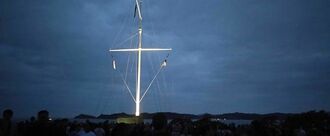
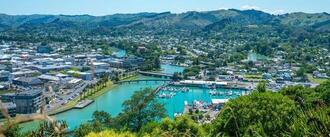.jpeg)

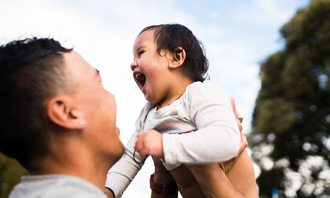
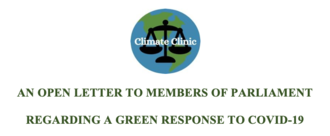
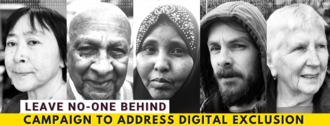.png)

